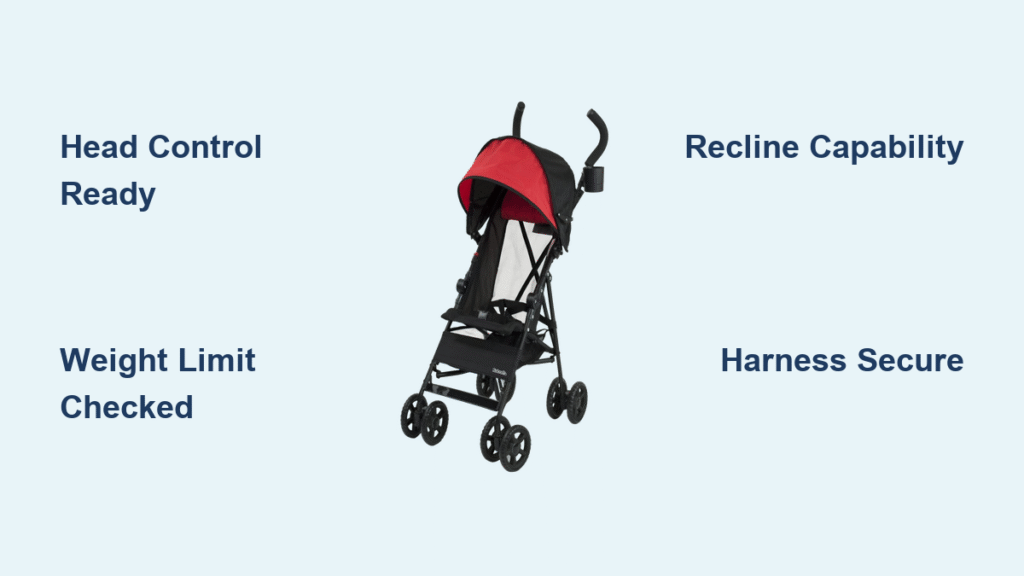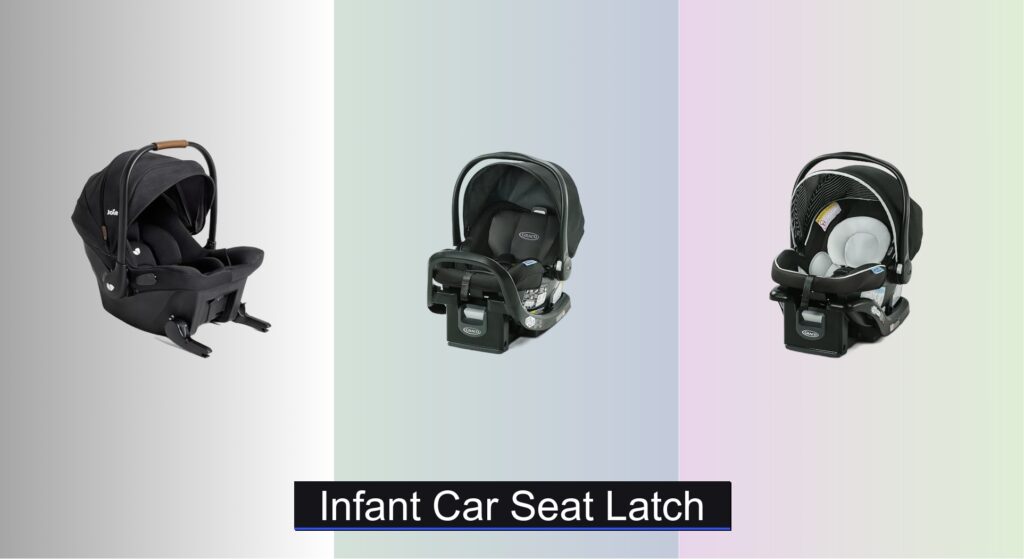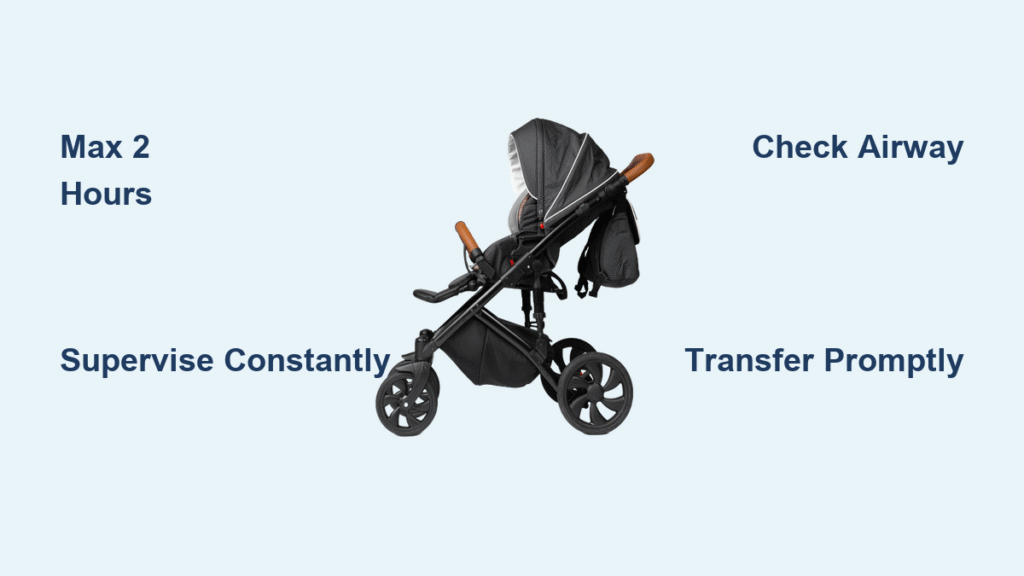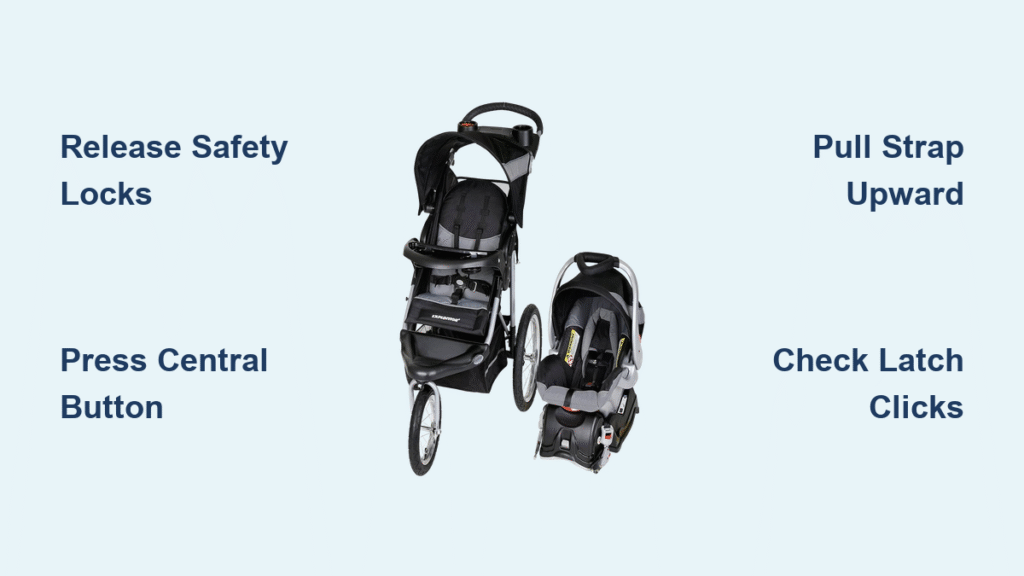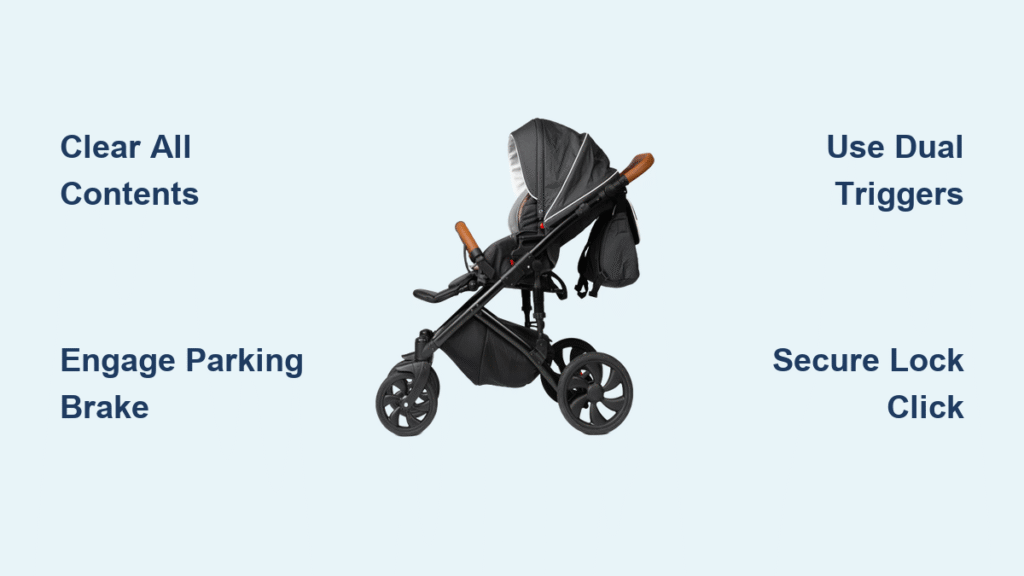That sleek umbrella stroller in your closet isn’t just gathering dust—it could be your secret weapon for stress-free outings. But how old for umbrella stroller use is truly safe? Most parents assume 6 months is the magic number, yet your baby’s physical readiness matters far more than the calendar. When your infant lacks the neck strength to hold their head upright, forcing them into a basic umbrella stroller creates serious airway risks. This guide cuts through the confusion with actionable milestones, model-specific weight checks, and red flags you’ll never want to ignore.
Unlike bulkier travel systems designed for newborns, umbrella strollers demand one non-negotiable skill: the ability to sit like a mini-adult without collapsing like a ragdoll. Getting this wrong risks positional asphyxiation—a silent danger where a floppy head blocks the airway. But nail the timing, and you’ll unlock effortless airport dashes, crowded market navigation, and spontaneous errands. Let’s pinpoint exactly when your baby earns their passport to portable parenting.
Why Your 5-Month-Old Can’t Handle an Umbrella Stroller (Yet)
Chronological age is a terrible predictor for how old for umbrella stroller readiness. A 5-month-old might sit steadily while an 8-month-old still needs support—the difference lies entirely in physical development. Until your baby demonstrates rock-solid trunk control, umbrella strollers pose unacceptable risks.
The 10-Minute Floor Test You Must Perform
Place your baby on a firm surface without props. If they topple within 60 seconds or plant hands like stilts to stay upright, they’re not ready. True readiness means:
– Head stays centered during gentle torso tilts (no lagging behind)
– Back maintains straight posture without rounding into a “C” shape
– Hands stay free for play instead of bracing against the floor
– Sustained sitting lasts 10+ minutes without sliding or folding forward
Critical mistake: Assuming car seat tolerance equals stroller readiness. Car seats cradle infants at a safe 30-45 degree angle, while most umbrella strollers sit babies nearly upright with minimal recline.
Your Complete Readiness Checklist
Before that first ride, verify all these boxes are checked:
– ✅ Weight safety margin: Baby weighs at least 3 lbs below the stroller’s max limit (e.g., 37 lbs for a 40-lb capacity model)
– ✅ Heat resilience: Baby tolerates 20+ minutes in warm environments without overheating (umbrella strollers lack ventilation of full-size models)
– ✅ Harness patience: Stays calm while buckled for short trips without constant squirming
– ✅ Adjusted age for preemies: Use corrected age (birth date + weeks premature) for milestone checks
Weight Limits Dictate Your Stroller’s Expiration Date

While 6 months marks the starting line, your stroller’s retirement age depends entirely on your child’s growth curve. Most umbrella strollers cap at 40-55 lbs—roughly matching a 3- to 5-year-old’s weight. But a petite 6-year-old might still fit while a stocky 3-year-old could blow past limits overnight.
Finding Your Stroller’s True Limit
Don’t trust marketing claims—locate the silver sticker on the frame showing the manufacturer’s certified weight limit. Common real-world examples:
– Summer Infant 3D Lite: 50 lbs (retires at ~4.5 years for average-weight kids)
– Chicco Liteway: 40 lbs (often outgrown by age 3)
– UPPAbaby G-LITE: 55 lbs (safely carries some 5-year-olds)
– gb Pockit Air: 45 lbs (ideal for lighter toddlers)
Pro tip: Weigh your child monthly once they hit 35 lbs. That final growth spurt before hitting the limit happens fast—often adding 5+ lbs in 3 months. Exceeding the limit risks frame collapse on uneven terrain or sudden tip-overs during turns.
The Hidden Danger of Using Umbrella Strollers Too Early

That “no infants under 6 months” label isn’t corporate CYA—it’s lifesaving anatomy. Newborns and young infants have heads weighing 25% of their body mass with underdeveloped neck muscles. In an upright seat, gravity pulls their head forward, collapsing the airway like a kinked garden hose.
Why Recline Isn’t the Fix
You might think “I’ll just recline it!”—but most umbrella strollers offer only 2-3 shallow angles (max 120 degrees), far from the near-flat 150+ degrees needed for safe infant positioning. Full-size strollers solve this with car seat adapters or true lie-flat modes. Without those, your baby faces positional asphyxiation within minutes.
Never risk it if your baby:
– Still needs head support during tummy time
– Slumps sideways in high chairs or shopping carts
– Was born more than 3 weeks premature (use adjusted age)
– Has diagnosed low muscle tone or neurological conditions
When It’s Time to Retire the Umbrella Stroller
Outgrowing isn’t sudden—it’s a series of subtle signs ignored until your child complains or kicks the canopy. Watch for these physical and behavioral warnings:
Physical red flags:
– Knees press sharply against chest due to short seat depth
– Head grazes canopy even when sitting perfectly straight
– Harness straps maxed out but still dig into shoulders
– Child’s hips angle above 90 degrees (knees higher than hips)
Behavioral clues:
– “I can walk!” declarations after 5 minutes of riding
– Unbuckling harness independently during stops
– Tantrums about stroller use at playgrounds or stores
– Frequent requests to be carried instead
Smart Shopping for 6- to 12-Month-Olds

Not all umbrella strollers suit young babies—even when they pass the readiness test. Prioritize these features for infants just hitting the how old for umbrella stroller threshold:
Non-Negotiables for Young Passengers
- Multi-angle recline: Even 110-degree lean helps during surprise naps (avoid single-position models)
- 5-point harness: Prevents dangerous leans during sudden stops—critical for wiggly 7-month-olds
- Extra-large canopy: Must extend past baby’s feet to block sun glare during reclined naps
- Mesh ventilation panels: Prevents heat buildup that causes infant overheating in carriers
- Removable seat pad: For quick cleanup after spit-ups (babies 6-12m average 2.3 leaks per outing)
Skip these for babies under 12 months:
– Parent cup holders (you’ll need both hands for baby anyway)
– Footmuffs (overheating risk outweighs warmth benefits)
– Boot covers (hinder quick diaper changes)
– “Toddler tray” attachments (irrelevant for non-walkers)
Real-Life Scenarios: When Umbrella Strollers Shine
Airport Survival (6m–4y)
From security lines to gate checks, the umbrella stroller’s magic is overhead bin compatibility. Models like the gb Pockit (9.5 lbs folded) fit most airline bins—confirmed by JetBlue and Southwest. Pro move: Gate-check it with a car seat adapter strapped on for immediate post-landing use.
Pharmacy Dash (6m–3y)
That 15-minute diaper run becomes feasible when setup takes 8 seconds instead of 2 minutes. For babies 6-9 months, always recline slightly during loading to prevent head slump in the car seat transition.
Farmer’s Market Navigation (8m–5y)
Crowded aisles demand maneuverability. The narrow 17-inch width of most umbrella strollers threads through gaps where bulkier models get stuck. Critical tip: Start with 20-minute outings—overstimulated babies under 10 months often melt down faster in upright seats.
Safe Alternatives Before the 6-Month Mark
Babywearing for Infants Under 5 Months
Structured carriers mimic the womb’s support while keeping airways clear:
– Soft-structured carriers (Ergobaby Adapt): Support newborns to toddlers with head pillows
– Stretchy wraps (Solly Snug): Customizable compression for preemies
– Ring slings (Lillebaby): 10-second on/off for quick store trips
Travel Systems as Stepping Stones
Keep using your car seat-compatible stroller until independent sitting emerges. The Graco Modes or Chicco Bravo offer near-flat reclines with infant inserts—safely bridging the gap until your baby hits the how old for umbrella stroller milestone.
When to Finally Retire Your Umbrella Stroller
| Age Range | Can They Use It? | Action Required |
|---|---|---|
| 0–4 months | ❌ Never | Use car seat stroller or baby carrier |
| 5–6 months | ⚠️ Only if passing all readiness tests | Verify head control weekly |
| 6–18 months | ✅ Ideal | Prioritize recline and 5-point harness |
| 18–36 months | ✅ Perfect | Standard features suffice |
| 3–5 years | ✅ If under weight limit | Monthly weight checks |
| 5+ years | ❌ Rarely | Retire even if under weight limit |
Most babies safely transition to umbrella strollers between 5–8 months—but only when they demonstrate unwavering sitting control. The moment your child exceeds the sticker’s weight limit, that stroller becomes a liability, not a convenience. When in doubt, choose babywearing over forcing premature use. Once you’ve cleared that how old for umbrella stroller hurdle, you’ll wonder how you ever managed without this travel essential—until the day your 4-year-old proudly declares “I’m too big for this!” and walks out of the store on their own two feet.

